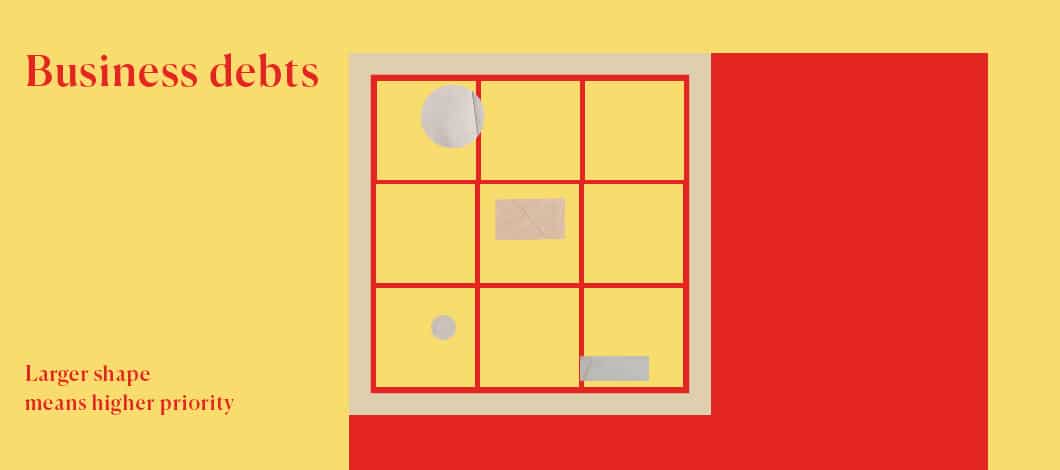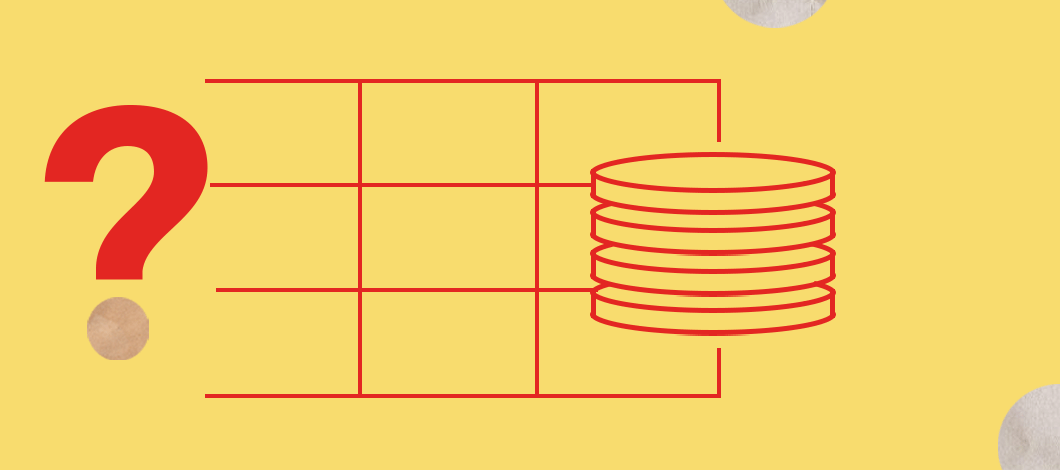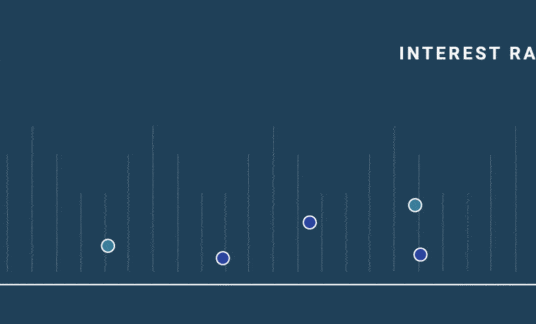Maintaining a business debt schedule allows you to make more informed decisions about planning for and executing business growth, implementing payment strategies and handling unexpected costs.
Business schedules of debt demonstrate how easy it can be to keep tabs on what your company owes and to whom.
Let’s dig a little deeper into what a debt schedule is and how it functions. We’ll even give you debt schedule examples and templates to follow so you can learn how to get started making your own debt schedule today.
What Is a Business Debt Schedule?
A debt schedule for a business is a table that lists your debts according to the order of maturity.
Your schedule of business debt can include details about the following:
- Leases
- Loans
- Contracts
- Accounts payable
- Other periodic payables
At the end of the day, a business debt schedule connects 3 essential financial documents:
- Income statement
- Balance sheet
- Cash flow statement
Interest expenses listed in the debt schedule are tied into your income statement, while the balance sheet includes the same closing debt balance. The third tie-in comes from the principal repayments, which influence the cash flow statement.
It’s important to note that while very common, business expenses, such as short-term accounts payable and accumulated liabilities, are not typically listed in a debt schedule.
-
Schedule of Assets and Debts vs. Debt Schedule
Your business debt schedule form is different from a schedule of assets and debts, despite the similar names. A debt schedule tracks vital information about your business’s financial obligations, but the schedule of assets and debts discloses an individual’s total liquid and investment assets and debts owed. The latter document is primarily used in divorce proceedings.
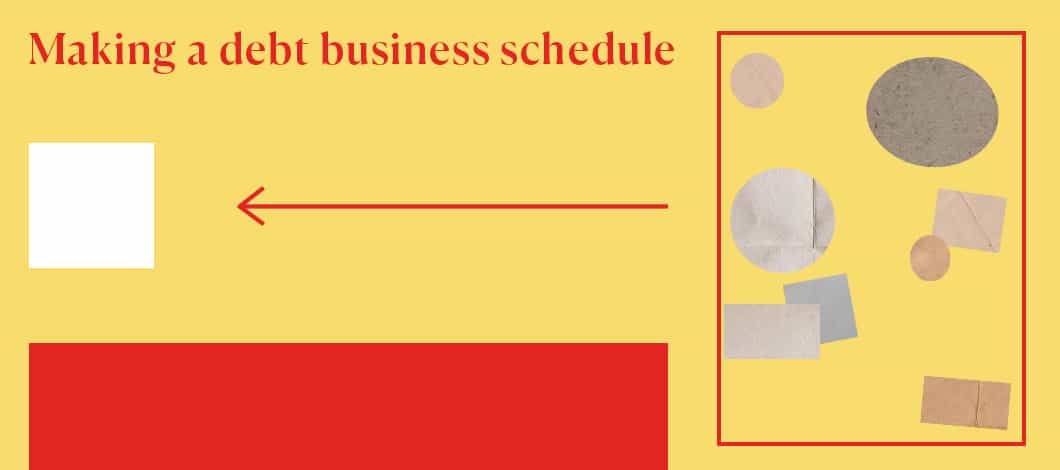
How to Fill Out a Business Debt Schedule
Your business debt schedule should include several essential categories, outlined below. Adding the details of each debt will enable you to get a fuller picture of the commitments and variables in your business. What’s more, each aspect will allow you to strategize more effectively for today and tomorrow.
Be sure to include the following information regarding each obligation in your debt schedule:
- Creditor or lender name
- Original date
- Original amount
- Current balance
- Interest rate
- Monthly payment
- Maturity date
- Collateral posted
A debt maturity schedule is used almost exclusively for internal purposes, so feel free to include notes about each debt, its function and any other information you’d like to have.
Business Debt Schedule Example
If you’re wondering what a business debt schedule looks like, here’s an example:
| Creditor | Original Date | Original Amount | Balance | Interest Rate | Monthly Payment | Collateral | Maturity Date |
| ABC Bank | 2/1/14 | $75,000 | $42,625.53 | 3.5% | $741.64 | Home | 2/1/24 |
| XYZ Lending | 6/30/16 | $20,000 | $11,200.94 | 7% | $396.02 | Business Equipment | 6/30/21 |
You can conduct your own calculations to confirm your completed business debt schedule form is accurate, or review against the information noted on your most recent debt statements.
While you’d be hard-pressed to find a business debt schedule calculator, you might consider using an amortization calculator or a debt repayment calculator to help you keep track of balance adjustments as you pay down your outstanding obligations as well as potential reduced interest costs as your term progresses.
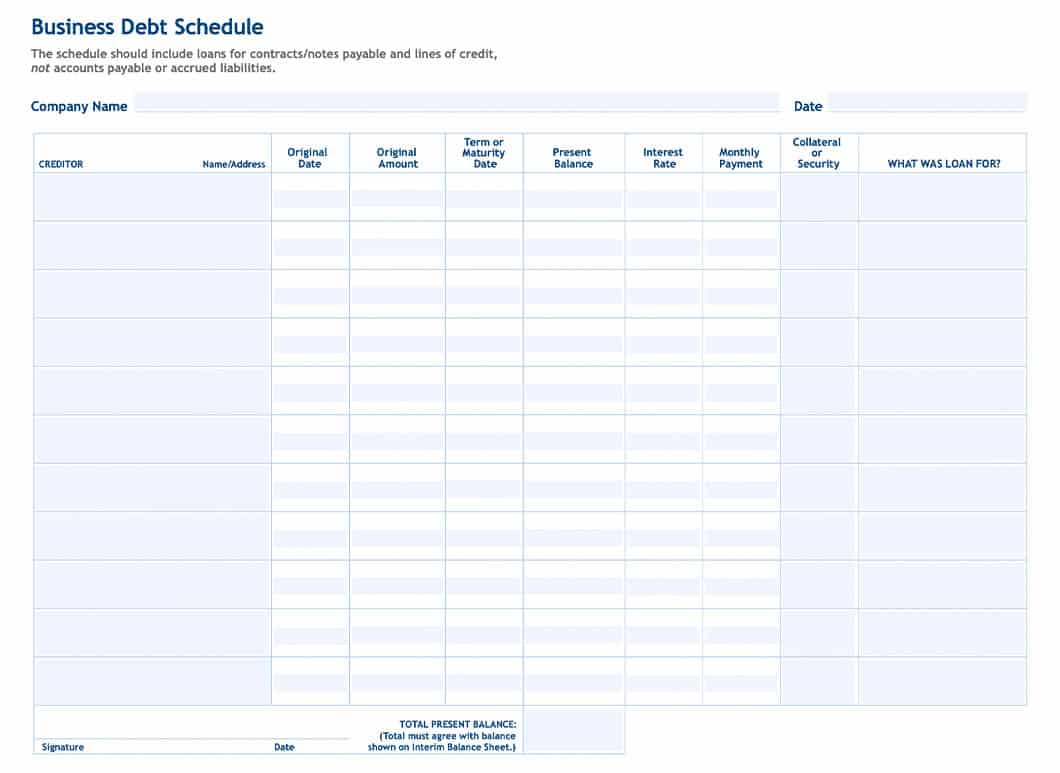
Where to Get a Free Business Debt Schedule Template
If you’re wondering how to build a debt schedule template in Excel or Google Drive’s Sheets, you can use the above example as a model. However, if you’d rather not create a debt sheet from scratch, you can access free debt schedule templates online.
Websites where you can find a business debt schedule template include:
Benefits of Using a Business Debt Schedule
In addition to simplifying your business expenses, having a business debt schedule will allow you to have a firm grasp of the details of your payment schedules and interest rates. A business debt schedule can also help you gather and review your company’s debts easily, so you can accurately and effectively plan for repayments. It can even help you understand if your company can take on an additional small business loan.
Let’s look at the benefits of having a business debt schedule in more detail.
Don’t Miss a Payment
There are few things worse than missing a payment, especially when you’re trying to reduce your debts. Having all of your due payments organized in a single document can help you stick to your debt repayment plan and make sure your payments are on time.
Create a Debt Repayment Plan
Knowing precisely when your bills are most concentrated each month gives you time to evaluate your cash flow properly. With your payments aligned, you can plan and save when necessary to ensure you can make each due date.
Refinance Your Rates
Once you’ve optimized your payment strategy and established a consistent track record, you will have greater leverage to potentially renegotiate your interest rates. Renegotiating can help ease the strain of high-interest payments and put your business in a more comfortable position.
Build More Accurate Forecasts
Business forecasts are one of the most time-consuming and challenging items for a small business owner. What makes them easier to produce is having easy access to the information required to create accurate, responsible decisions for the year ahead.
Make Better Borrowing Decisions
Business needs can quickly change. So when you need to make a fast, well-educated decision on whether or not you can take on more debt through a cash flow loan or a line of credit, a business debt schedule can make your life a lot easier by helping you analyze your cash flow.
Provide Information to Lenders
If you need to take on additional debt, a potential lender may ask to see your business debt schedule — among other documents. You can provide the form you currently use or submit a copy, excluding your internal notes.



